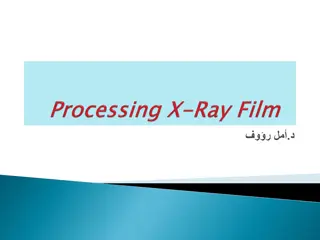Developer Tools for Efficient Work
SSH clients, UNIX commands, source control systems, and demonstrations for software development. Learn how to use these tools effectively and enhance your productivity in coding projects.
Download Presentation

Please find below an Image/Link to download the presentation.
The content on the website is provided AS IS for your information and personal use only. It may not be sold, licensed, or shared on other websites without obtaining consent from the author.If you encounter any issues during the download, it is possible that the publisher has removed the file from their server.
You are allowed to download the files provided on this website for personal or commercial use, subject to the condition that they are used lawfully. All files are the property of their respective owners.
The content on the website is provided AS IS for your information and personal use only. It may not be sold, licensed, or shared on other websites without obtaining consent from the author.
E N D
Presentation Transcript
Warmup A programmer s wife tells him, Would you mind going to the store and picking up a loaf of bread? Also, if they have eggs, get a dozen. The programmer returns with 12 loaves of bread.
Section 2: Developer tools and you Alex Mariakakis cse331-staff@cs.washington.edu (staff-wide)
Outline Introductions SSH clients PuTTY UNIX Source control SVN Demo + questions
What is an SSH client? Uses the secure shell protocol (SSH) to connect to a remote computer o Enables you to work on a lab machine from home o Similar to remote desktop Windows and Linux users: PuTTY and WinSCP o Windows and Linux users Mac users: Terminal application o Go to Applications/Utilities/Terminal o Type in ssh XY cseNetID@attu.cs.washington.edu
What is UNIX? Command-line based operating system o Like Windows or Mac OS without the mouse Command What it does pwd prints the name of the working directory ls lists the files in a directory (i.e., lists stuff) cd changes a directory cp copies a file or directory mv move/rename a file or directory rm removes a file mkdir make a new directory rmdir remove an empty directory man pulls up the manual pages
DEMO #1 http://courses.cs.washington.edu/courses/cse331/1 4wi/tools/WorkingAtHome.html
What is source control? Also known as version control/revision control System for tracking changes to code o Software for developing software Essential for managing projects o See a history of changes o Revert back to an older version o Back up your work o Merge changes from multiple sources We ll be talking about Subversion, but there are alternatives Git, Mercurial, CVS Email, Dropbox, USB sticks
Source control organization A repository stores the master copy of the project o Someone creates the repo for a new project o Then nobody touches this copy directly o Lives on a server everyone can access Each person checks out her own working copy o Makes a local copy of the repo o You ll always work off of this copy o The version control system syncs the repo and working copy (with your help) Repository svn Working copy Working copy
Source control common actions Most common commands: Commit / checkin o integrate changes from your working copy into the repository Update o integrate changes into your working copy from the repository Repository update commit svn Working copy
Source control common actions (cont.) More common commands: Add, delete o add or delete a file in the repository o just putting a new file in your working copy does not add it to the repo! Revert o wipe out your local changes to a file Resolve, diff, merge o handle a conflict two users editing the same code Repository add, delete revert svn Working copy
How to use Subversion 1. Eclipse plugin: Subclipse 2. GUI interface: TortoiseSVN, NautilusSVN 3. Command line: PuTTY
This Quarter We distribute starter code by adding it to your repo You will code in Eclipse just as you would have in your previous classes You turn in your files by adding them to the repo and committing your changes You will validate your homework by SSHing onto attu and running an Ant build file
DEMO #2 http://www.cs.washington.edu/education/courses/ cse331/14wi/tools/versioncontrol.html
Theoretical Scenario You are working on a computer in the lab and feel like you are at a good stopping point. You hit Save on your computer and start driving to Canada, only to realize that you forgot to commit your changes to your repo. Do you have to turn around and drive back?
Theoretical Scenario You are working on a computer in the lab and feel like you are at a good stopping point. You hit Save on your computer and start driving to Canada, only to realize that you forgot to commit your changes to your repo. Do you have to turn around and drive back? SSH into the attu, change to your eclipse workspace directory, and then call svn commit























